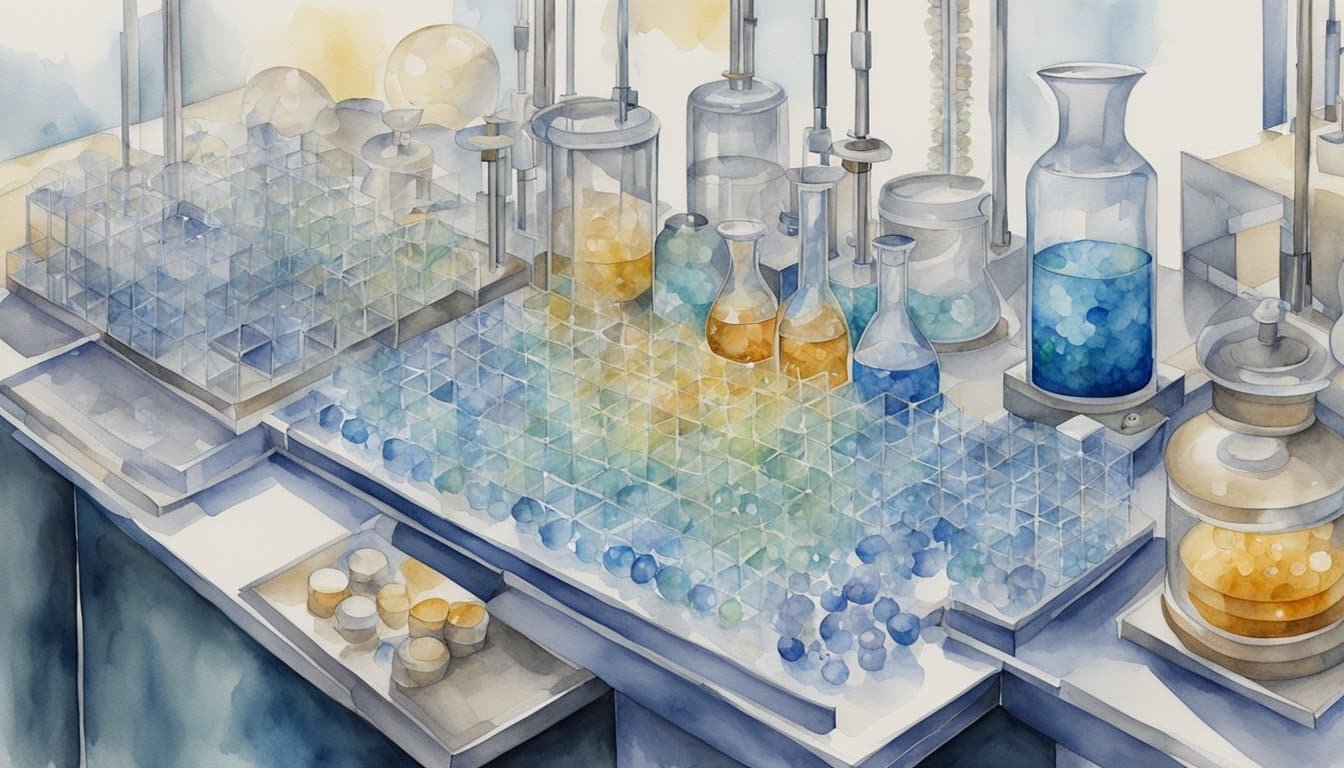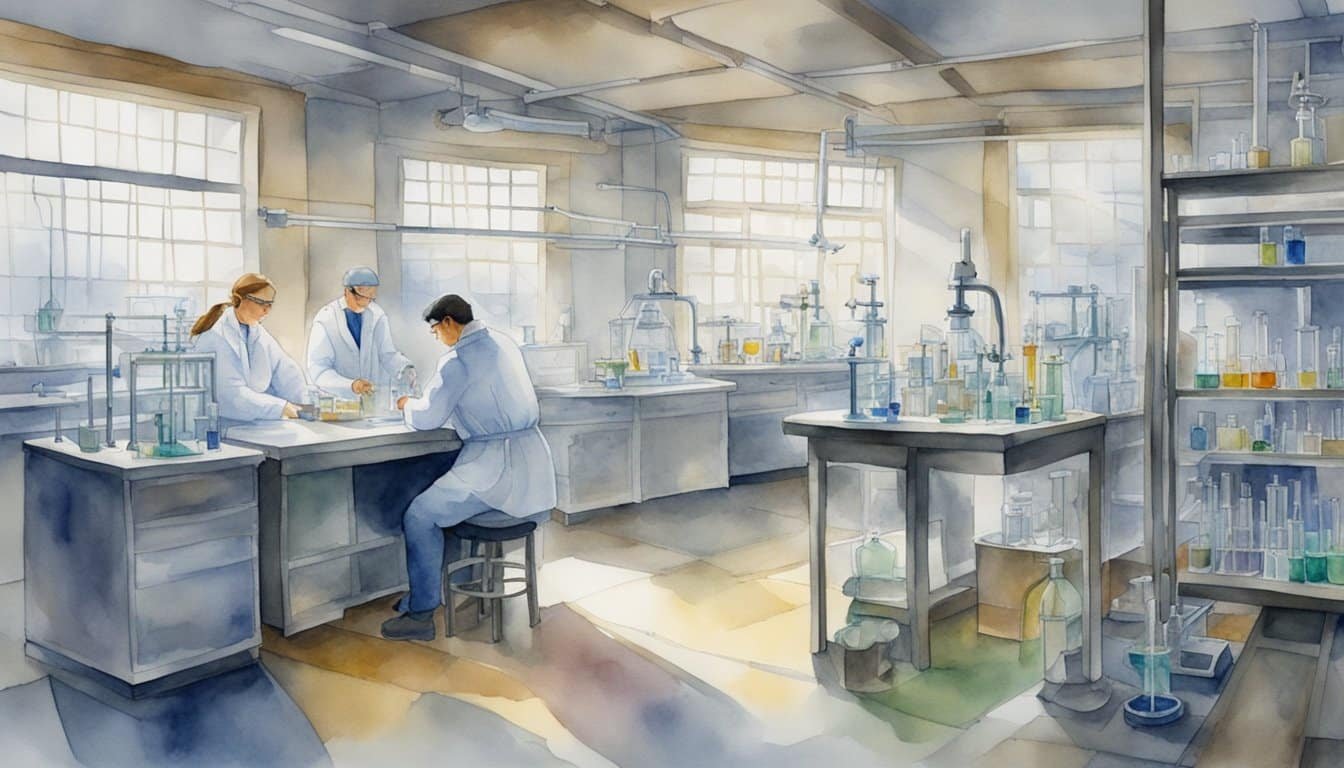Fundamentals of Time Crystals
Time crystals represent a tantalizing concept that blends the rigidity of crystalline structures with the fluidity of incessant motion. Their existence challenges conventional physics and hints at new phases of matter that defy the relentless march of entropy.
Defining Time Crystals
Time crystals are unique phases of matter that exhibit periodic motion in their ground state, essentially maintaining constant movement without energy input. This peculiar characteristic means they break time-translation symmetry, a property where the laws of physics are invariant as time progresses. Unlike traditional crystals that exhibit patterns in space, time crystals reveal patterns in time, leading to a rhythmic, clock-like behavior.
Theoretical Groundwork by Frank Wilczek
The idea of time crystals was first proposed by physicist Frank Wilczek in 2012. He pondered whether it’s possible for matter to experience symmetry breaking in time like it does in space, thus birthed the comprehensive theoretical underpinning for time crystals. This novel concept initially faced skepticism, as it appeared to flout the established laws of thermodynamics.
Quantum Mechanics and Perpetual Motion
Quantum mechanics serves as the cornerstone of time crystals, permitting behaviors unthinkable in classical physics. It’s vital to distinguish that while time crystals might seem like perpetual motion machines, they don’t conflict with the laws of thermodynamics; they’re not doing work in the traditional sense. Instead, their perpetual dynamics at the quantum level redefine the conventional notion of motion, skirting around entropy while remaining fully within the bounds of physics.
Experimental Realization and Properties

Time crystals, much like their name suggests, exhibit a structure that repeats in time. This peculiar state of matter captures the imagination, as it transcends the behaviors of traditional crystals that we’re more familiar with.
First Observation in the Lab
The first successful observation of a time crystal was a milestone that marked a leap from theoretical physics into tangible reality. Experiments conducted in the University of Maryland’s labs used a chain of ytterbium ions precisely controlled with laser beams. By introducing a periodic drive to these ions using laser pulses, they were able to encourage behaviors that indicate the formation of a time crystal in the lab.
Roles of Temperature and Energy
For time crystals to reveal their true colors, the roles of temperature and energy are critical. Typically, low temperatures play a key role in stabilizing these structures—just as they do in traditional crystal formation—because they reduce thermal fluctuations that can disrupt the time crystal’s periodicity. Moreover, energy input, often from periodically driven systems, is required to maintain the time crystal’s repeating patterns over time, indicating a non-equilibrium state that defies the second law of thermodynamics.
Recurring Patterns and Stability
The core property of time crystals is their ability to exhibit recurring patterns in time—a manifestation of stability over time instead of in spatial arrangement. This persistence is observed even when the environmental conditions are changed, suggesting an intrinsic stability of the phase. In addition to that, the stability is often supported by external magnetic fields that align the spins in the quantum system, reinforcing the temporal regularity despite external perturbations.
Applications and Future Research

Exploring the realm of time crystals opens up a plethora of possibilities, from enhancing quantum computing power to pioneering new technologies. Here’s a sneak peek into the ongoing journey and what lies on the horizon.
Advancements in Quantum Computing
Time crystals could revolutionize quantum computing by providing more stable qubits, which are the building blocks of quantum computers. Qubits exist in quantum states that are the quintessence of computing power at the quantum level. Scientists are delving into how time crystals can maintain their coherence over longer periods, which is essential for reliable and efficient quantum computing. This line of research is crucial as it strives to solve one of the biggest challenges in this field: error correction.
Insights into Out-of-Equilibrium Phases
Time crystals represent a new and exotic phase of matter that defies the traditional laws of thermodynamics. They exist in non-equilibrium states—a concept that tickles the fancy of those with a keen interest in unraveling mysteries of the universe. Research in this area not only sheds light on these peculiar phases but also provides deeper understanding into how systems can permanently oscillate without energy loss, profoundly impacting the foundation of physical laws.
Potential for New Technologies
The quirks of time crystals extend beyond theory and into practical applications. For instance, their unique properties could lead to the development of advanced technologies that operate outside the bounds of traditional energy consumption frameworks. Whether it be in the creation of sensors that are more resilient to outside influences or entirely new devices that harness the stability of time crystals, scientists keep pushing the envelope to turn these fascinating manifestations into tangible technology.

